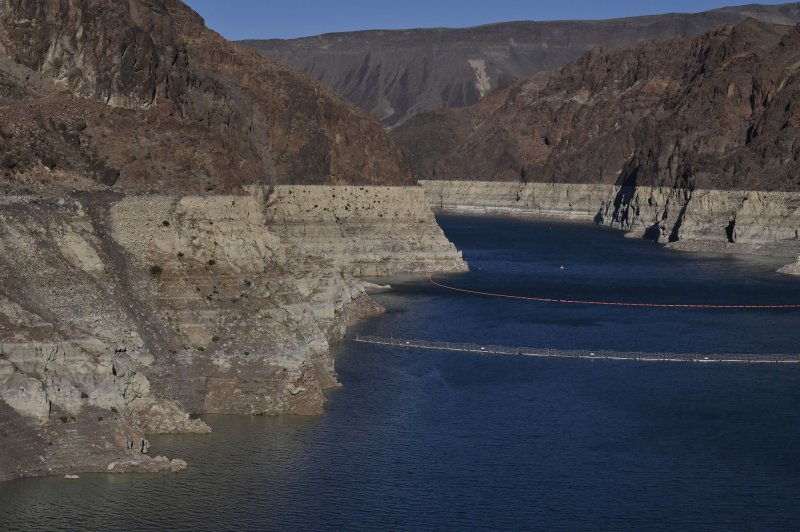Declining water levels due to 20 years of ongoing drought reshaped Lake Mead’s shorelines as seen in this file photo from November 16, 2022. On Monday, $4.9 million from NOAA and the Inflation Reduction Act will help fund seven projects to improve drought monitoring in the western United States. File Photo by Jim Ruymen/UPI |
License PhotoJune 24 (UPI) — The U.S. government has earmarked nearly $5 million to improve drought monitoring in the western United States, where a drought two years ago cost $23.3 billion.
The National Oceanic Atmosphere Administration announced Monday it will contribute $3.1 million in funding from its National Integrated Drought Information System program to combine with $1.8 million from the Inflation Reduction Act for a total of $4.9 million to protect “life, property and ecosystems” from drought.
“Thanks to President Biden’s Investing in America agenda and the historic Inflation Reduction Act, this investment will support NOAA and its partners in better preparing Western communities for droughts in the coming years and decades,” said Secretary of Commerce Gina Raimondo.
The money will be spent on three years of research to determine what is driving drought conditions in the West and whether those conditions are part of long-term change.
There are a total of seven drought monitoring projects being funded.
One project at the Georgia Institute of Technology will re-evaluate the role of atmospheric moisture variability caused by the tropical oceans in droughts in the southwestern United States.
A second project at the University of California at Los Angeles will predict drought and water resource challenges for residents and cities.
The University Corporation for Atmospheric Research in Colorado will work to understand why atmospheric water vapor has not increased over arid regions.
A fourth project at the University of Texas at Arlington will work to improve reservoir operation and water budgeting in the West.
Research at California State University, Long Beach will determine how heatwave-snow drought relationships have impacted the western United States.
A study at the University of Colorado, Boulder will analyze plant-drought interactions.
And the seventh project to be funded will work to improve Colorado River Basin streamflow forecast models for better water resource decisions.
“The future of the West depends on meeting the crisis of water availability with ingenuity and resolve,” said Sarah Kapnick, NOAA chief scientist.
“I’m excited to see the results of these new investments in science that will prepare manager, stakeholders and communities to anticipate, react to and manage the increasing challenges posed by the water systems critical to their lives and economies.”

